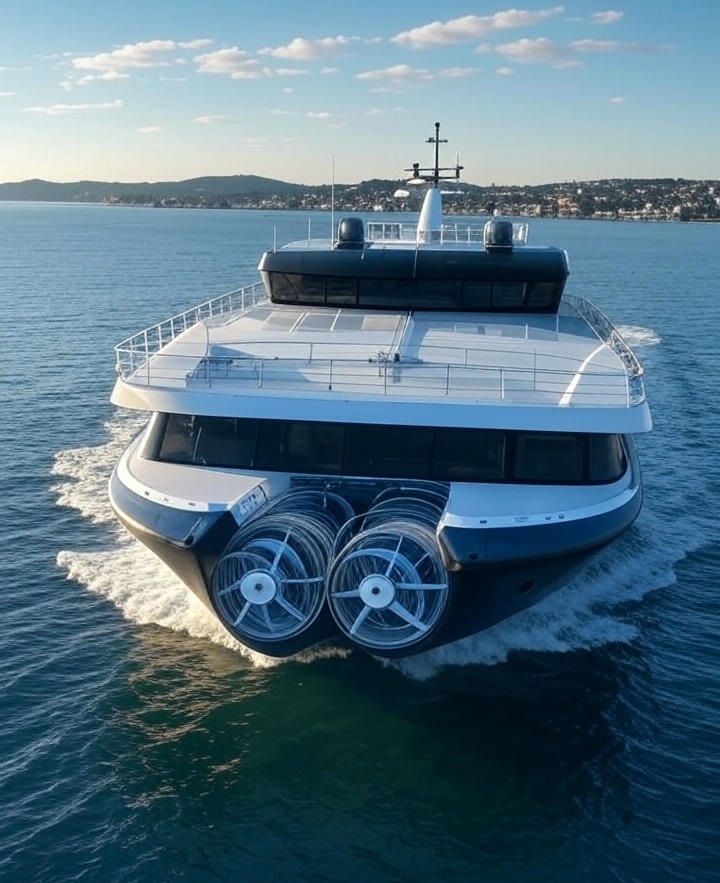
The maritime world is riding a wave of transformation, propelled by the hum of electric motors and the promise of cleaner voyages. Hybrid and electric ferries, once a distant vision, are now slicing through waters worldwide, redefining how we navigate our seas, rivers, and lakes. This booming niche is not just a technological leap but a beacon of sustainability, blending innovation with environmental stewardship. As coastal cities and island nations grapple with carbon footprints and rising fuel costs, these vessels offer a compelling solution, merging efficiency with eco-conscious design.

A New Tide in Maritime Travel
Ferries have long been the lifeblood of coastal and island communities, shuttling passengers and goods across waterways. But traditional diesel-powered ferries, while reliable, come with a heavy environmental toll—emitting greenhouse gases and pollutants that harm marine ecosystems and air quality. Enter hybrid and electric ferries, which are charting a greener course. These vessels, powered partly or entirely by electricity, are slashing emissions and reducing reliance on fossil fuels. The shift is seismic: in 2023, over 100 electric ferries were operational globally, with hundreds more in development, according to industry reports.
The appeal is clear. Electric ferries produce zero tailpipe emissions, while hybrids, which combine electric and diesel power, offer flexibility for longer routes while still cutting fuel use by up to 50%. For operators, the economics are equally enticing—electric propulsion systems lower maintenance costs and shield against volatile fuel prices. For passengers, the ride is quieter, smoother, and guilt-free, aligning with a growing demand for sustainable travel.
Pioneers of the Electric Wave
Scandinavia, a region synonymous with maritime innovation, leads the charge. Norway’s fjord-laden coast, with its short, frequent ferry routes, is a perfect testing ground. The world’s first fully electric ferry, Ampere, launched in 2015, still operates between Lavik and Oppedal, covering 5.6 kilometers in 20 minutes. Powered by lithium-ion batteries, it carries 120 cars and 360 passengers, saving 1,000 tons of CO2 annually. Norway’s ambition doesn’t stop there: the country aims for all its ferries to be low- or zero-emission by 2030, backed by government incentives and robust charging infrastructure.
Elsewhere, Canada’s British Columbia is electrifying its fleet, with BC Ferries planning hybrid vessels for major routes. In Asia, Japan and South Korea are investing in electric ferries to serve densely populated coastal cities. Even in the U.S., Washington State’s ferry system—the largest in the country—is retrofitting diesel vessels with hybrid systems, aiming for a 76% emissions reduction by 2040. These examples underscore a global truth: where there’s water, there’s potential for electric ferries.
Technology Powering the Surge
At the heart of this revolution are advancements in battery technology and propulsion systems. Modern lithium-ion batteries, similar to those in electric cars, offer high energy density and rapid charging capabilities. A typical electric ferry can recharge in 10-20 minutes during passenger loading, ensuring seamless schedules. For longer routes, hybrid systems shine, switching between electric and diesel power as needed. Some vessels even incorporate renewable energy, like solar panels or regenerative braking, which captures energy during docking.
Shoreside infrastructure is equally critical. High-capacity charging stations, often powered by renewable sources like wind or hydro, are popping up at ports worldwide. In Denmark, the electric ferry Ellen—one of the largest of its kind—charges using wind energy, creating a near-zero-carbon operation. Meanwhile, wireless charging systems, where ferries connect to power without physical cables, are emerging as a game-changer, reducing wear and tear on equipment.
Challenges on the Horizon
Despite the momentum, scaling this niche isn’t without hurdles. High upfront costs for electric ferries—often 20-30% more than diesel counterparts—can deter operators, especially in developing regions. Battery production also raises environmental concerns, as mining lithium and cobalt has ecological and ethical implications. However, as battery recycling improves and economies of scale drive down costs, these barriers are shrinking.
Range limitations pose another challenge. While electric ferries excel on short routes (under 20 miles), longer journeys require hybrid systems or breakthroughs in battery capacity. Cold climates, like those in Scandinavia, can reduce battery efficiency, demanding robust thermal management systems. And while charging infrastructure is expanding, it lags in remote or less affluent regions, where diesel remains king.
Regulatory hurdles also loom. Maritime laws, often slow to evolve, must adapt to certify electric systems for safety and performance. Yet, governments are stepping up, with subsidies, tax breaks, and emission mandates spurring adoption. The European Union, for instance, has set ambitious targets for maritime decarbonization, pushing ports to prioritize green infrastructure.
The Ripple Effect
The rise of hybrid and electric ferries isn’t just about cleaner boats—it’s about reshaping maritime culture. Ports are becoming hubs of sustainability, integrating renewable energy and smart grids. Coastal communities benefit from reduced air and noise pollution, improving public health. For island nations like the Maldives or the Philippines, electric ferries could transform tourism, offering eco-friendly transport that preserves pristine environments.
The economic ripple is equally profound. Shipbuilding is evolving, with companies like Damen Shipyards and Vard designing vessels optimized for electric propulsion. New jobs are emerging in battery manufacturing, charging infrastructure, and vessel maintenance. Small operators, once reliant on diesel, are finding hybrid systems a gateway to modernization, leveling the playing field with larger fleets.
The Future Is Electric
Looking ahead, the trajectory is clear: hybrid and electric ferries are no longer a niche but a cornerstone of maritime innovation. By 2030, analysts predict the global market for electric ferries will exceed $7 billion, driven by urbanization, climate goals, and technological leaps. Innovations like solid-state batteries, which promise greater range and safety, could further accelerate adoption. Autonomous electric ferries, already in trials, may soon reduce crew costs and enhance efficiency.
For passengers, the experience is transformative. Imagine gliding across a fjord or harbor, the only sound the lapping of waves, knowing your journey treads lightly on the planet. For operators, the math adds up: lower costs, happier customers, and a future-proof business. For the planet, the stakes are even higher—every electric ferry deployed is a step toward cleaner seas and a cooler climate.
Riding the Wave
The surge of hybrid and electric ferries signals a broader shift in how we view transportation. It’s not just about getting from point A to point B; it’s about doing so responsibly, efficiently, and with an eye toward tomorrow. As technology advances and costs decline, this niche will only grow, carrying us toward a future where our waterways are as vibrant and sustainable as the communities they connect. The seas are surging, and electric ferries are leading the charge—one quiet, clean voyage at a time.









